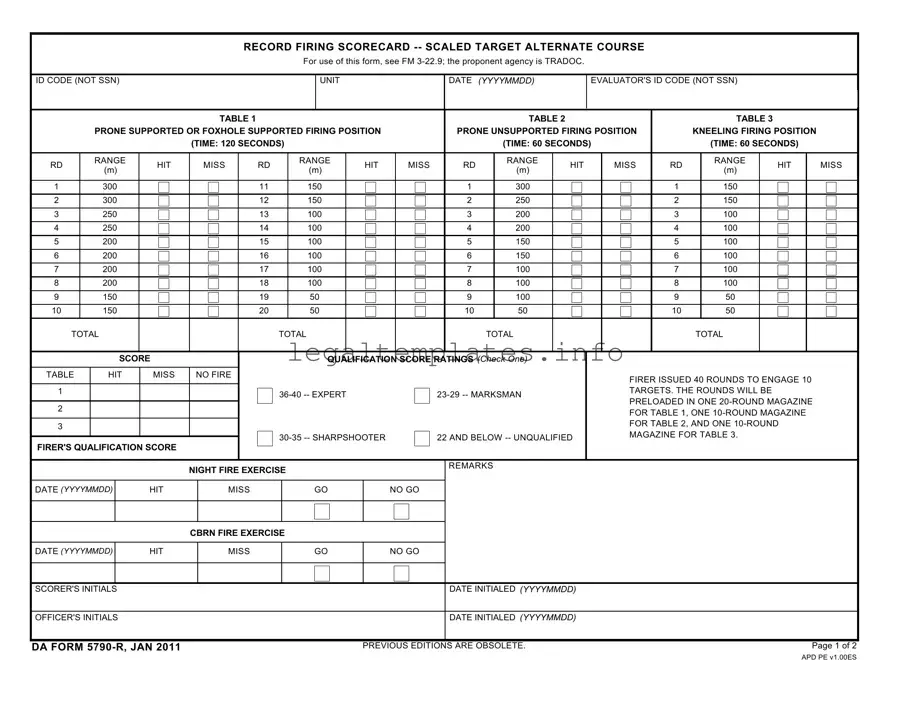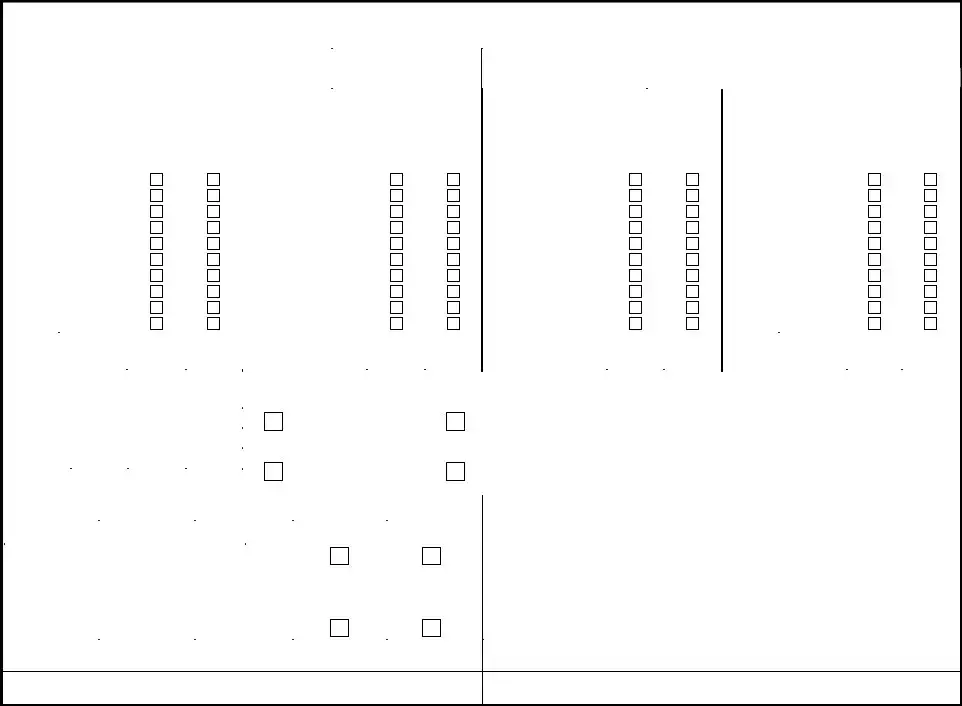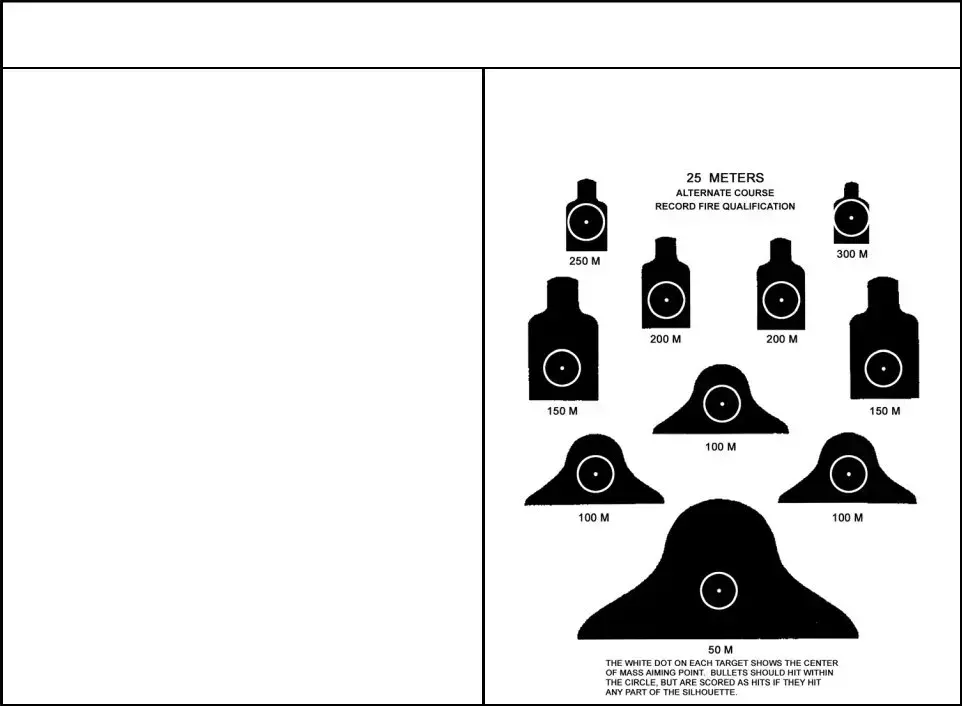The DA Form 88, also known as the Combat Pistol Qualification Course Scorecard, showcases similarities to the DA Form 5790-R, primarily in its function as a method for documenting firearm proficiency within the U.S. Army. Similar to the DA Form 5790-R, the DA Form 88 records hits, misses, and scores to determine qualification levels but focuses on pistol marksmanship. Both forms serve the essential role of tracking and formalizing the shooting accuracy and capabilities of service personnel, ensuring they meet the required standards for weapon proficiency.
Another comparable document is the DA Form 5704 or 5705-R, the Alternate Pistol Qualification Course Scorecard, which, like the DA Form 5790-R, is used for recording scores during an alternate qualification course when standard ranges are not available. This form assesses a soldier's handgun proficiency, emphasizing the importance of versatility and adaptability in qualification settings. Whether for rifles or pistols, such scorecards play a crucial role in maintaining the high standards of marksmanship expected of military personnel.
The DA Form 3595-R, Record Fire Scorecard, shares a purposeful similarity with the DA Form 5790-R by recording individual firing scores for rifle qualification. Both documents ensure soldiers meet their required marksmanship qualifications but in different contexts or weapon systems. They are integral to the Army’s overarching goal of sustaining a combat-ready force through regular and rigorous marksmanship training and evaluation.
The Navy's OPNAV 3591/1 Small Arms Qualification Record is paralleled to the DA 5790-R in terms of functionality and purpose, though it services members of the Navy. It tracks marksmanship qualifications and proficiency for sailors, underlining the universal importance of firearm proficiency across all military branches. While each service branch has its unique forms and procedures, the foundational goal is the same: to certify the readiness and effectiveness of service members in using their assigned weapons.
The Air Force Form 522, USAF Firearm Qualification Record, though tailored for the Air Force's operational requirements, similarly documents service members' firearm proficiency levels. This form, akin to the DA 5790-R, serves as a tangible record of an individual’s firing abilities and qualifications, ensuring that personnel are capable of meeting the specific marksmanship standards set forth by the Air Force.
The SF 86, Questionnaire for National Security Positions, while not a direct scorecard for firearms, indirectly correlates with documents like the DA 5790-R by impacting an individual’s military career trajectory based on their qualifications, including marksmanship. Successful completion and qualification scores from documents such as the DA 5790-R may enhance the perceived reliability and skillset of a service member, illustrating the integral role these qualifications play in broader security clearances and assignments.
The NGB Form 23B, Army National Guard Retirement Points Statement, although primarily concerned with retirement and benefits, subtly connects to the DA 5790-R through the accumulation of points for annual qualification scores. This shows that regular and competent firearms proficiency not only meets immediate tactical and operational requirements but also contributes to long-term career achievements and benefits within the military structure.


